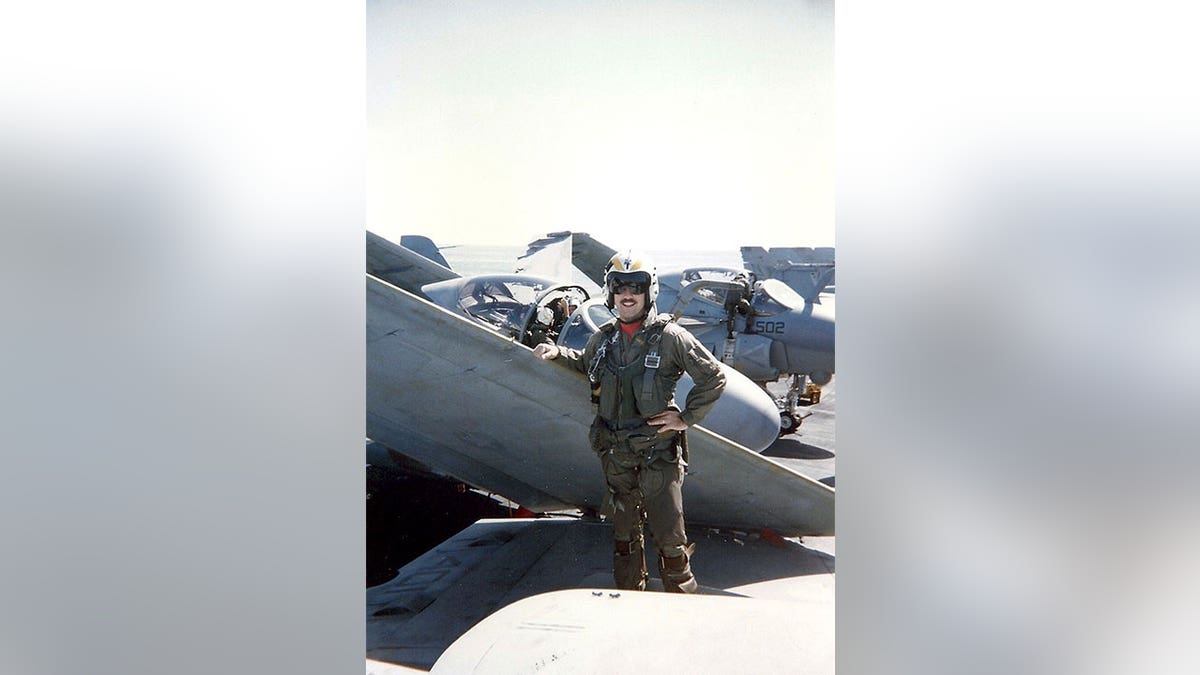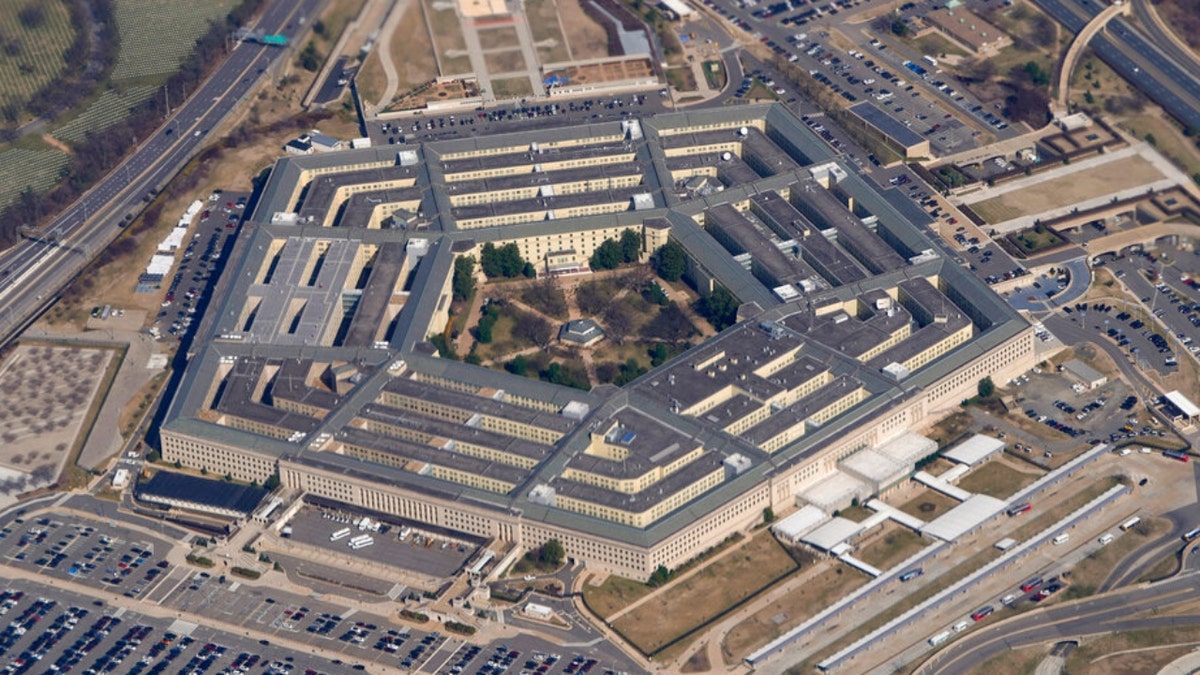U.S. Army’s WWII K-9 Corps was born on this day in history, March 13, 1942
America’s four-legged foot soldiers and sailors served with the Army, Navy, Marines and Coast Guard in WWII, earning acclaim in numerous roles, including front-line combat.
High rates of cancer among military pilots have been discovered by a Pentagon study.
And for the first time, it's been shown that ground crews that fuel, maintain and launch those aircraft are getting sick as well.
The Pentagon released the study in early February, the Associated Press reported.
Retired military aviators had long sought the data, the AP said on Sunday, March 19.
BREAKTHROUGH BONE CANCER DRUG SLOWS TUMOR GROWTH, EXTENDS SURVIVAL IN EARLY STUDIES
The military aviators had raised alarms for years about the number of air and ground crew members they knew who had cancer.
They were told that earlier military studies had found they were not at greater risk than the general U.S. population.

Navy A-6 Intruder pilot Jim Seaman died of cancer at age 61. He is one of a group of pilots who were diagnosed with cancer, the Associated Press reported. His widow Betty Seaman has been part of a large group of aviators and surviving spouses who have lobbied Congress and the Pentagon for years to look into the number of cancers aviators and ground crew face. (Betty Seaman via AP)
But in a yearlong study of almost 900,000 service members who flew on or worked on military aircraft between 1992 and 2017, the Pentagon found that air crew members had an 87% higher rate of melanoma and a 39% higher rate of thyroid cancer, as the AP reported.
Meanwhile, men had a 16% higher rate of prostate cancer and women a 16% higher rate of breast cancer.
COULD A URINE TEST DETECT PANCREATIC AND PROSTATE CANCER? STUDY SHOWS 99% SUCCESS RATE
Overall, the air crews had a 24% higher rate of cancer of all types, according to the AP.
The study showed ground crews had a 19% higher rate of brain and nervous system cancers, a 15% higher rate of thyroid cancer and a 9% higher rate of kidney or renal cancers.
Overall, the air crews had a 24% higher rate of cancer of all types, the study found.
Women, meanwhile, had a 7% higher rate of breast cancer, the same study found.
The overall rate for cancers of all types was 3% higher, the AP noted.
Navy A-6 Intruder pilot Jim Seaman was one of those who died of cancer at age 61. He passed away in 2018.

Navy A-6 Intruder pilot Jim Seaman standing in front of his jet. He passed away from lung cancer at age 61 in 2018. (Betty Seaman via AP)
He is among a group of pilots who were diagnosed with cancer, the Associated Press reported.
His widow Betty Seaman has been part of a large group of aviators and surviving spouses who have lobbied Congress and the Pentagon for years to look into the number of cancers aviators and ground crew face.
The Pentagon acknowledged that the study had gaps that likely led to an undercount of cancer cases.
PANCREATIC CANCER RATES ARE RISING FASTER AMONG WOMEN THAN MEN: NEW STUDY
The military health system database used in the study did not have reliable cancer data until 1990 — so it may not have included pilots who flew early-generation jets in the prior decades.
Some good news, too
There was some good news, however, reported as well.
Both ground and air crews had far lower rates of lung cancer, and air crews also had lower rates of bladder and colon cancers.

Navy A-6 Intruder pilot Jim Seaman leaning on the wing of his jet. Seaman is one person from a group of pilots who died of cancer. (Betty Seaman via AP)
After adjusting for age, sex and race, the data compared the service members with the U.S. general population.
The Pentagon said the new study was one of the largest and most comprehensive done to date.
BREAST CANCER AND MAMMOGRAMS: EVERYTHING YOU NEED TO KNOW ABOUT THE DISEASE, SCREENING AND MORE
An earlier study had looked at Air Force pilots only — and had found some higher rates of cancer, while this one looked across all services and at both air and ground crews.
The study was required by Congress as part of the 2021 defense bill.
Even with the wider approach, the Pentagon cautioned that the actual number of cancer cases was likely to be even higher because of gaps in the data — which it said it would work to remedy.
The study was required by Congress in the 2021 defense bill, the AP noted.
Now, given that higher rates were found, the Pentagon must conduct an even bigger review to try to understand why crews are getting sick.

The Pentagon is seen from Air Force One in this file photo as it flies over Washington in March 2022. Now, given the results of the new study on cancer, the Pentagon must conduct an even bigger review to try to understand why crews are getting sick. (AP Photo/Patrick Semansky, File)
The Pentagon took pains to point out that the new study "does not imply that military service in air crew or ground crew occupations causes cancer, because there are multiple potential confounding factors that could not be controlled for in this analysis," such as family histories of cancer, smoking behavior or alcohol use.
Localized prostate cancer
Meanwhile, an entirely different study found that men diagnosed with localized prostate cancer who want to avoid immediate surgery or radiation can safely choose to actively monitor the disease as a treatment method.
That's according to a recent study released last week in the New England Journal of Medicine.
CLICK HERE TO SIGN UP FOR OUR HEALTH NEWSLETTER
Researchers in the study determined that most men shouldn't panic or rush to treatment decisions following a diagnosis, as the mortality rate from the cancer 15 years later was relatively low regardless of treatment approach.
The study began in the United Kingdom in 1999.
CLICK HERE TO GET THE FOX NEWS APP
It involved 2,664 men between the ages of 50 and 69 who were diagnosed with localized prostate cancer.
Of those men, 1,643 were enrolled in a trial studying three different treatment methods — surgery to remove tumors (553), radiation (545), and active monitoring (545).
Elizabeth Pritchett of Fox News Digital, as well as The Associated Press, contributed reporting.






















